Reading A Church
Over Christmas I had the great delight of looking after a parish for three Sundays and the weekdays between. From 27 December until 12 January I said mass each day at St Mary’s in Nelson, an historic church that serves a vibrant parish community. Being there had a touch of nostalgia for me as I had spent my early childhood in that parish. From four months old until ten years of age, St Mary’s was ‘The’ Catholic Church for me; it formed many of my ideas and ideals of what a church is. So, I returned as an adult and had the chance to look hard at this formative place of worship. In this and subsequent articles I want to explore the symbolism of the church building and its decorations.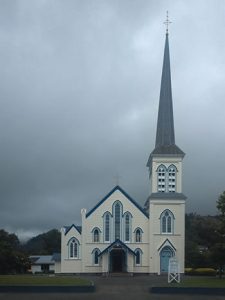
St Mary’s Church is situated in Manuka Street on land that slopes up above the central and oldest part of the City of Nelson. St Mary’s is on the high side of the street looking down on the town, which means that when you are in town you look up to it. The property was bought in 1850. The first church on the site was built in 1856 but it burned down in 1881. The present building, built by Mr Good, was completed in 1882 while the saintly Fr Antoine Garin SM was parish priest.
In the period of Church architecture between the Council of Trent (1545) and the Second Vatican Council (1963) most Catholic Church architecture was influenced by a book by St Charles Borromeo - Instructiones Fabricae et Supellectilis Ecclesiasticae (1577). Borromeo recommends the use of the number three because of the Trinity, five because of Pentecost, seven for the sacraments, and twelve for the apostles. Here is what Borromeo suggests for the site of a church:
It is particularly important that the location of the church, wherever it is built, should be up high. If this location is completely level, it should at least be sufficiently prominent so that access to the church will be by three or at the most five steps. If the topography is such that there is no more elevated part, then the church should be built on a base so that it will be raised and rise up over the plain, and the floor will be reached by means of those three or five steps.
So that there will be greater veneration in the church and to keep it, insofar as possible, far from all noise which might disturb the divine offices, care must also be taken in choosing the site that it be far from muddy and dirty areas, from all kinds of filth, stables, sheep pens, taverns, forges, shops, and markets of all kinds. Places of this kind should also be far from the surrounding areas of the church.
Care must also be taken in choosing the site for the church that the building will appear as a separate block, that is unconnected to and separated from the walls of the surrounding buildings by a space of several paces, as will be explained further on with regard to the street, as established by the ancients and required by correct criteria.
St Mary’s fulfils all Borromeo’s stipulations about location and follows his symbolism, there are the three steps up to the porch and to the entrance to the bell tower. There is the grouping of three central lancet windows. Patterns of three, five and seven recur throughout the Church. It is a free standing building with only the front façade decorated with sacred images. Borromeo advises against any secular image on the façade. This is why many churches, like this one, have a notice board on the street distinct from the main structure. To my mind, the bronze plaque identifying this as a historic place should not have been attached to the front wall even in the neat and discrete way it has been done.
There is a perpendicular gothic aesthetic. The windows and doors are topped by pointed arches, which along with the strong vertical lines direct the eye upward. The central group of three windows symbolize the Trinity to whom this upward movement leads. The tall steeple (about 50 metres high!) takes your gaze up and up. An old photo in Nelson Provincial Museum shows that the two corner beams and the porch were originally topped with tapering finials (mini steeples).
Two saints occupy the upper register of the façade, between us and the Trinity. They are Peter with his keys and Paul with his book, but now missing his sword. These are not the patron saints of this church but rather those of the church of Rome. In purchasing and placing these two statues Fr Garin, was making a statement about local and universal. This little church in far flung New Zealand belonged to something much bigger.
During the day the double doors of the porch stand open, inviting the passer-by to come inside. In the next issue we will do that, in the meantime take a hard look at the outside of your parish church and see what messages it attempts to convey.
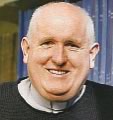
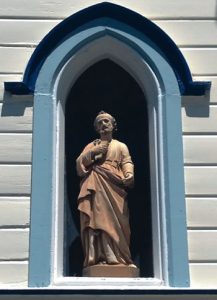
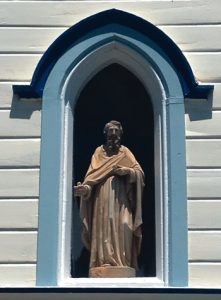
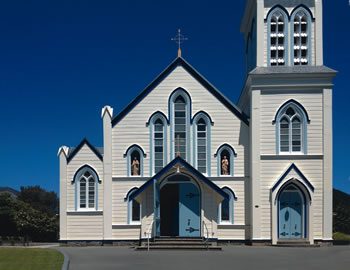
 Entries(RSS)
Entries(RSS)